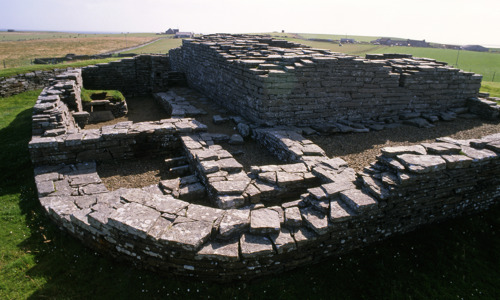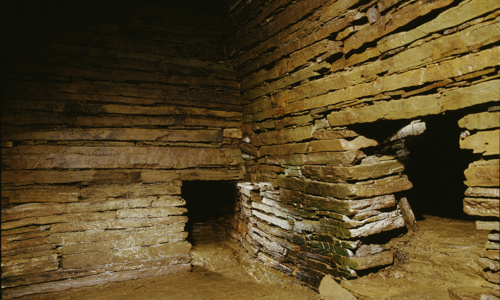History
Quoyness Chambered Cairn was in use from about 3000 to 2500 BC.
It’s a fine example of a Neolithic chambered tomb. A 9m entrance passage leads to an central rectangular chamber, which is opens to six irregular-shaped cells. A circular stone-lined cist was also discovered in the floor of the central chamber.
Excavations in the 1800s at Quoyness found:
- human skulls and bones in four of the six cells
- partial remains of at least 10 adults and four or five children in the central cist
- animal bones
- fragments of pottery and stone tools
One hammerhead-shaped stone object is strikingly similar to objects found at Skara Brae.
Quoyness also contains rare examples of Neolithic scratch art. The presence of this art reinforces the connection between these tombs and houses like those at Skara Brae, where similar carvings are found.
House of the dead
Quoyness Chambered Cairn’s layout also links it to the houses at Neolithic settlements. The design of tombs like Quoyness closely resemble that of the houses at Skara Brae.
Tombs’ entrance passages were longer and lower, and they were entombed in cairns of stones, but the parallels between these resting places and domestic houses are uncanny. It is likely that this reflects Neolithic beliefs around life and death.
The small peninsular where Quoyness sits must have had a special significance in prehistoric times. Near Quoyness is another chambered tomb, now ruined, and numerous smaller cairns. They’re probably a little more recent than Quoyness, dating to the Bronze Age, about 4,000 years ago.
















